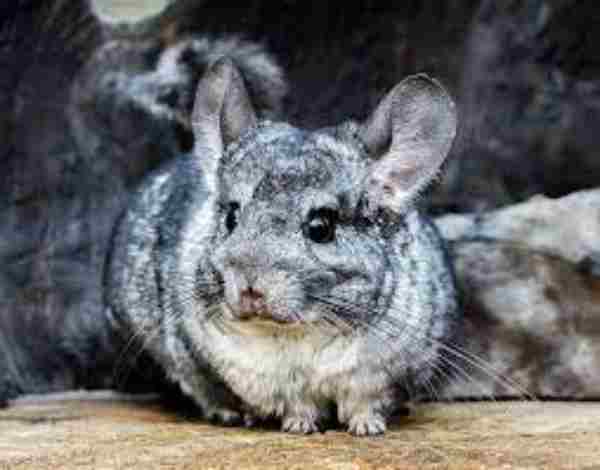Chinchillas, with their plush fur and playful personalities, make delightful pets that captivate the hearts of many animal enthusiasts. While these adorable rodents thrive on companionship and social interactions, exploring suitable animal companions can enhance their well-being and overall happiness.
This article delves into the fascinating world of “Animals That Can Live With Chinchillas,” shedding light on potential cohabitants that can create a harmonious living environment for these charming creatures.
Table of Contents
From fellow small mammals to avian friends and even compatible reptiles, we embark on a journey to discover the diverse range of animal companions that can share a space with chinchillas. Unveiling the intricacies of their compatibility, interactions, and the mutual benefits of these interspecies friendships, we aim to guide chinchilla owners in expanding their fur family while ensuring the utmost comfort and happiness for their cherished chinchilla pals.
Understanding Chinchilla Behavior and Needs:
To select suitable animal companions for chinchillas, a fundamental understanding of their behavior and needs is essential. Chinchillas are social animals known for their playful and energetic demeanor. They thrive on interaction, mental stimulation, and companionship. A proper chinchilla habitat should prioritize adequate space, proper bedding, chew toys, and a balanced diet to ensure their well-being.
Additionally, chinchillas are sensitive to temperature and require a cool, dry environment. Comprehending their behavior, including dust bathing habits and nocturnal nature, lays the foundation for creating a conducive living space and introducing compatible companions that align with their unique traits and needs.
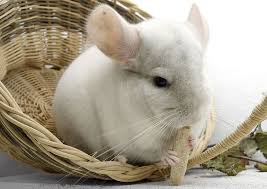
Suitable Animal Companions for Chinchillas:
When considering suitable animal companions for chinchillas, fellow small mammals within a similar size range and activity level often make good choices. Degus, guinea pigs, and friendly rabbits are potential candidates, as they share the need for social interaction and mental engagement. However, it’s vital to monitor their interactions and ensure a gradual introduction process to foster a positive relationship. Each species should have ample space and resources to avoid potential conflicts and maintain their well-being in a shared living environment.
Other Chinchillas:

Chinchillas, adorable and energetic rodents native to the Andes Mountains, are renowned for their incredibly soft fur, playful nature, and lively personalities. These social creatures thrive in the company of their own kind, making them ideal to live in pairs or small groups. Chinchillas possess natural agility and love to climb, hop, and play, requiring spacious and secure enclosures with multiple levels for exercise and exploration. Their diet primarily consists of high-quality hay, pellets, and occasional treats.
These herbivores also enjoy chewing to maintain dental health, necessitating chew toys, and safe chewing options within their habitat. Due to their dense fur, they are sensitive to high temperatures and should be kept in a cool and well-ventilated environment. Regular dust baths are vital to keep their fur clean and free from oils.
Chinchilla owners often create engaging playtime activities, ensuring mental stimulation and physical exercise. Responsible ownership entails providing a well-balanced diet, routine veterinary care, and a loving environment to ensure the happiness and longevity of these delightful companions.
Degus:

Degus, social rodents closely related to chinchillas, share similarities in their social behavior and active lifestyle. Originating from Chile, these diurnal animals possess a keen sense of curiosity and intelligence. Degus thrive in the company of their own species, displaying playful interactions and a hierarchy within their groups. They require spacious enclosures with multiple levels, exercise wheels, and ample room to explore and climb.
A well-balanced diet comprising hay, pellets, and fresh vegetables supports their health. Like chinchillas, degus need opportunities for dental wear, often achieved through chew toys and blocks. Dust baths are also crucial to maintain their coat’s cleanliness and health. Degus are known for their ability to communicate using a range of vocalizations, displaying their emotional states and social interactions.
Responsible degu ownership involves providing mental stimulation, regular vet check-ups, and creating a safe, enriched environment that mirrors their natural habitat. As they can be susceptible to certain health issues, attentive care and a suitable diet are vital to ensure the well-being of these delightful companions.
Gerbils:

Gerbils, charming and sociable rodents originating from arid regions of Africa and Asia, are known for their playful antics, boundless energy, and keen intelligence. These small creatures are highly social and prefer to live in pairs or groups, thriving on companionship. Due to their curious and active nature, gerbils require spacious enclosures with various tunnels, hideouts, and wheels for mental and physical stimulation.
A well-rounded diet includes a mix of seeds, pellets, grains, and occasional fresh vegetables. They also enjoy chewing to maintain dental health, necessitating safe chew toys within their habitat. A dust bath is a delightful activity for gerbils, contributing to their grooming routine and overall hygiene.
Responsible gerbil ownership involves regular cleaning of their living space, providing opportunities for burrowing, and monitoring their health. These delightful rodents are known for their bonding behaviors, often cuddling and grooming each other, emphasizing the importance of their social environment for their well-being and happiness.
Guinea Pigs:
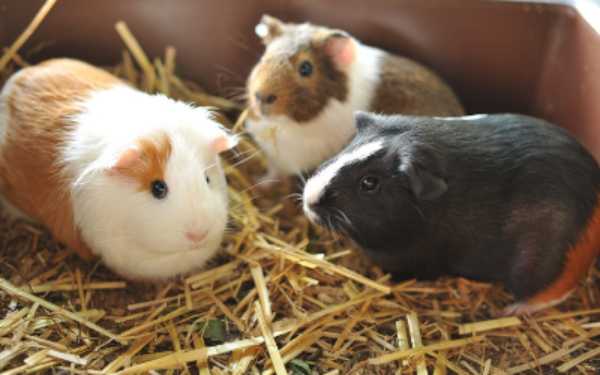
Guinea pigs, charming and gentle rodents originating from the Andes region in South America, are beloved for their endearing squeaks, sociable demeanor, and remarkable personalities. While they are social animals, they are different from chinchillas in terms of dietary needs and habitat preferences.
Guinea pigs thrive in pairs or small groups, appreciating the companionship of their fellow guinea pigs. Spacious enclosures with adequate room for exercise, cozy hideouts, and soft bedding are essential for their well-being. Their diet consists of hay, fresh vegetables, a limited amount of pellets, and vitamin C supplements, as they cannot produce it themselves.
Providing opportunities for chewing, such as safe wooden chew toys, supports their dental health. Guinea pigs, with their gentle and amicable nature, enjoy gentle handling and interactions with their human companions. Responsible guinea pig ownership involves maintaining a clean living environment, providing a well-balanced diet, and regular veterinary care, and dedicating time for social interaction, ensuring the happiness and longevity of these delightful pets.
Rabbits:
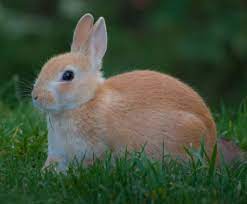
Rabbits, endearing and sociable small mammals, are well-loved for their playful antics, expressive personalities, and soft fur. Originating from Europe and parts of Africa, rabbits have become popular pets globally. While they can coexist in the same household as chinchillas, it’s essential to keep them in separate enclosures due to differences in their care needs.
Rabbits thrive on companionship and are often kept in pairs. They require spacious enclosures, providing ample room to stretch, hop, and play. A well-rounded diet includes hay, pellets, fresh vegetables, and occasional treats. Rabbits have a natural inclination to chew to maintain dental health, necessitating safe chew toys within their habitat.
Regular grooming, gentle handling, and supervised playtime are essential for their well-being. Responsible rabbit ownership involves providing proper hygiene, routine veterinary care, and a stimulating environment to ensure the happiness and longevity of these charming pets.
Cats and Dogs:

Cats and dogs, beloved and popular household pets, can share the same living space as chinchillas, although it’s crucial to ensure they do not have direct access to the chinchilla’s enclosure. Chinchillas can be easily stressed by the presence of predators, so keeping them in a secure and separate area is essential. While these larger pets may coexist in the same household, it’s vital to supervise their interactions and ensure that the chinchilla’s safety and well-being are always prioritized.
Fish and Reptiles:

Fish and reptiles, including turtles, snakes, and lizards, can coexist in the same household as chinchillas as they occupy different environments and have distinct care needs. However, it’s important to secure their enclosures to prevent any accidental access by the chinchillas, ensuring the safety and well-being of all pets in the household.
Birds (e.g., Budgerigars, Canaries):
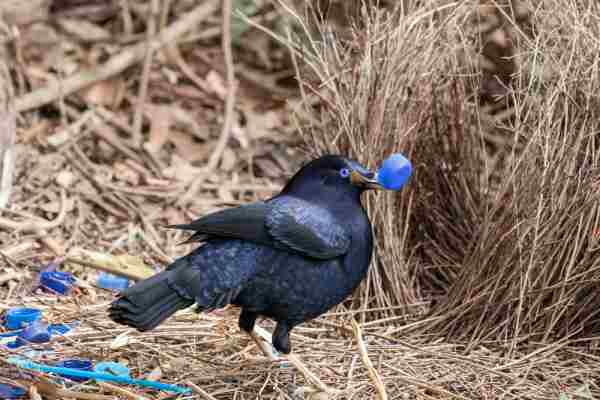
Birds, known for their colorful plumage and melodious songs, can coexist in the same household as chinchillas. However, they should have separate enclosures. Chinchillas are curious and may get stressed by the presence of birds, so it’s essential to ensure that the bird’s living space is secure and inaccessible to the chinchillas. Supervised interactions can be allowed, but caution should be exercised to prevent any potential harm or stress to either the chinchillas or the birds.
It’s important to remember that while these animals can coexist in the same household, their enclosures should always be secure, and interactions should be carefully monitored to ensure the safety and well-being of all the pets involved. Each species has unique care requirements, so providing appropriate care, diet, and living conditions for each animal is paramount for their health and happiness.
Animals to Avoid Housing with Chinchillas:
While considering companions for chinchillas, certain animals should be avoided due to differing needs, behaviors, or potential risks. Larger and more aggressive animals, such as dogs, cats, or ferrets, pose a threat to chinchillas and can induce stress or harm. Similarly, animals with different dietary requirements, like carnivores, aren’t suitable companions. Additionally, species that are known to have a predatory instinct should be strictly avoided to ensure the safety and comfort of the chinchillas.
Introducing and Managing Multi-Pet Environments:
Introducing and managing a multi-pet environment requires a careful and gradual approach. Initial separation with gradual supervised introductions in a neutral territory is crucial to assess the animals’ reactions and potential compatibility. Monitoring their behavior, providing adequate resources, and ensuring fair treatment to each pet is essential for a harmonious coexistence. Clear communication and consistent training are vital to maintain a peaceful and safe multi-pet environment.
Enrichment and Interaction in Multi-Pet Setups:
Enrichment and interaction play pivotal roles in maintaining a thriving multi-pet environment. Each animal should have ample opportunities for mental stimulation, physical exercise, and social engagement. Providing diverse toys, activities, and dedicated bonding time ensures a well-rounded environment that caters to the unique needs of each pet. Creating a routine that allows for individual and group interactions fosters positive relationships and prevents boredom or behavioral issues within the multi-pet setup.
Final Words:
Embracing a multi-pet household, especially with chinchillas, can be a rewarding experience with the right understanding, preparation, and guidance. By considering the needs, behaviors, and compatibility of various animal companions, we can create a loving and stimulating environment for our cherished chinchillas. Responsible pet ownership, proper introductions, and consistent enrichment contribute to a harmonious coexistence, ultimately enhancing the well-being and happiness of all the animals involved.
Reference:
- https://www.independent.co.uk/property/house-and-home/pets/features/your-questions-is-it-ok-to-house-a-rabbit-and-a-chinchilla-together-1810969.html
- https://qualitycage.com/blogs/news/chinchillas-and-cats
- https://smallpetselect.com/can-chinchillas-live-with-other-species/

Rahul M Suresh
Visiting the Zoo can be an exciting and educational experience for all involved. As a guide, I have the privilege of helping students and visitors alike to appreciate these animals in their natural habitat as well as introducing them to the various aspects of zoo life. I provide detailed information about the individual animals and their habitats, giving visitors an opportunity to understand each one more fully and appreciate them in a more intimate way.

